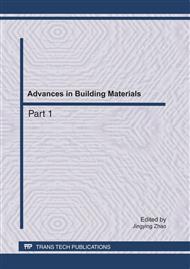p.1475
p.1480
p.1484
p.1489
p.1494
p.1499
p.1505
p.1510
p.1515
The Transient Electromagnetic Response Characteristics of Unfavorable Geological Bodies in Tunnels
Abstract:
A numerical model of Transient Electromagnetic Methods, which used to detect geological conditions in tunnels, was created by ANSYS finite element software, and the transient electromagnetic response characteristics of typical unfavorable geological bodies were discussed. The results indicate that the apparent resistivity isoline almost outputs in straight structure, and augments equably with the depth increasing when no unfavorable geological body is in front of the tunnel workface. The apparent resistivity isoline obviously reduces when water-rich karst cave, fault, or fracture exist in the front of the tunnel workface, where water-rich karst cave exists, the apparent resistivity isoline becomes close together, and there is to be an ordered pyramid resistivity-reduced area which can be an evidence of rich water fault. However, it will increase when dry fault or karst cave exist, and the high resistivity area corresponding to dry cave shows some triangles, but this phenomena is hard identified, which need detail analyses according to hydrogeologic data.
Info:
Periodical:
Pages:
1494-1498
Citation:
Online since:
May 2011
Authors:
Price:
Сopyright:
© 2011 Trans Tech Publications Ltd. All Rights Reserved
Share:
Citation:


